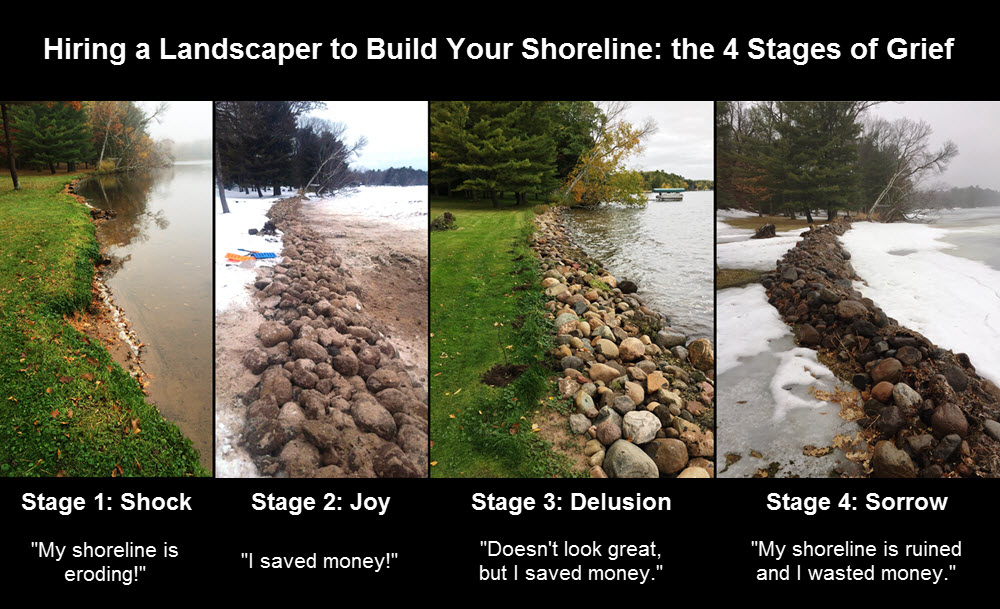7 Easy Facts About Shore Protect Team Explained
Some Known Factual Statements About Shore Protect Team
Table of ContentsThe Only Guide to Shore Protect TeamMore About Shore Protect TeamThe Facts About Shore Protect Team RevealedThe Only Guide to Shore Protect TeamAn Unbiased View of Shore Protect TeamShore Protect Team Things To Know Before You Get ThisSome Known Details About Shore Protect Team
Reduction in property value: As the area tourism is influenced by disintegration, so then is the economic situation. Customers are much less likely to look for a beach residence that could be ruined anytime by the upcoming flooding and disintegration emergency. Consequently, residential property value can drop tremendously and affect the entire area.Whether a coastline is simply small and congested or needs to close entirely for the security of the environment and neighboring homes, this considerably impacts tourism. In turn, neighborhood economic situations are impacted (http://www.place123.net/place/shore-protect-team-katy-united-states). Risk of injury: The enhanced threat of flooding and architectural failings triggers an increased risk of injury to nearby vacationers and community members

is home to greater than 84,240 miles of coastline with 41% of it subjected to the open sea. Coastal designers are in charge of securing the shore versus modifications by minimizing the destructive impacts of both natural and man-made incidents. Shoreline stabilization is directly pertaining to their work. Waterside resorts: Since shoreline erosion influences tourist, it impacts the success of beachfront resorts.
The Ultimate Guide To Shore Protect Team
Coastal industrial companies: No visitors means no service. Coastal state parks: State parks that exist along coastlines are at risk of damage.
Soft stablizing is a much far better remedy for the setting and even more sustainable overall. Tough stablizing uses manufactured structures as security to manage disintegration. Typically, these frameworks are mounted at appropriate angles or parallel to quit sand activity and reduce the force of waves. A lot of types of tough stabilization like seawalls and sheet metal are not ideal for coastline stablizing.
Not known Details About Shore Protect Team
There's also inadequate proof of their efficiency depending upon the type of shoreline and local problems. Difficult stablizing methods tend to be harder to set up and do not match the all-natural aesthetic, protruding like an aching thumb and harming regional communities in numerous situations. Coastline nourishment is the procedure of adding lost sand and debris back to coastlines after disintegration has actually taken place.
TrapBags aid in the process of beach sustenance by safeguarding natural ecosystems and enabling plants to expand. They're: Eco pleasant: You can make use of indigenous soil both to border and to fill the TrapBags.

Get This Report about Shore Protect Team
They can likewise be installed without any kind of hefty machinery. Budget friendly: TrapBags are optimal for both small and big locations of shoreline.
Combined with a high construction price, this has caused raising use of various other soft design coastal management options such as beach replenishment. Seawalls are built from various materials, a lot of commonly enhanced concrete, rocks, steel, or gabions. Other feasible building and construction products consist of vinyl, timber, light weight aluminum, fiberglass composite, and biodegradable sandbags made from hemp and coir. The proper seawall style depends on location-specific facets, including surrounding disintegration processes. There are 3 major kinds of seawalls: upright, curved, stepped, and mounds (see table below).
All-natural barriers, such as reef and mangrove woodlands, avoid the spread of tsunamis and the circulation of seaside waters and mitigated the flood and surge of water. A cost-benefit approach is a reliable method to determine whether a seawall is proper and whether the benefits are worth the expense.
The Buzz on Shore Protect Team
A seawall is a fixed feature which can contrast with the vibrant nature of the coastline and restrain the exchange of sediment in between land and sea. Advantages and disadvantages of seawalls according to Short (1999) Advantages Negative aspects Lengthy term service in comparison to soft beach nourishment (https://www.bunity.com/shore-protect-team).

This can trigger beaches to dissipate, providing them useless for coastline goers. Typically, seawalls can be an effective means to manage coastal erosion, yet just if they are created well and out of materials that can endure the force of recurring wave power. Some understanding is required of the coastal procedures and morphodynamics specific to the seawall place.
What Does Shore Protect Team Do?
The appropriate seawall layout counts on location-specific aspects, consisting of surrounding erosion procedures. There are 3 primary kinds of seawalls: upright, rounded, tipped, and mounds (see table listed below).
Natural obstacles, such as coral reefs and mangrove forests, avoid the spread of tidal waves and the flow of coastal waters and minimized the flood and surge of water. A cost-benefit technique is an effective method to identify whether a seawall is ideal and whether the benefits deserve the cost.
The smart Trick of Shore Protect Team That Nobody is Talking About
A seawall is a fixed function which can contrast with the dynamic nature of the coast and hinder the exchange of sediment in between land and sea. Benefits and negative aspects of seawalls according to Short (1999) Benefits Drawbacks Lengthy term option in comparison to soft beach nutrition.

This can cause coastlines to dissipate, providing them useless for coastline goers. Generally, seawalls can be a successful way to regulate coastal disintegration, yet just if they are created well and out of products that can hold up against the force of recurring wave energy.